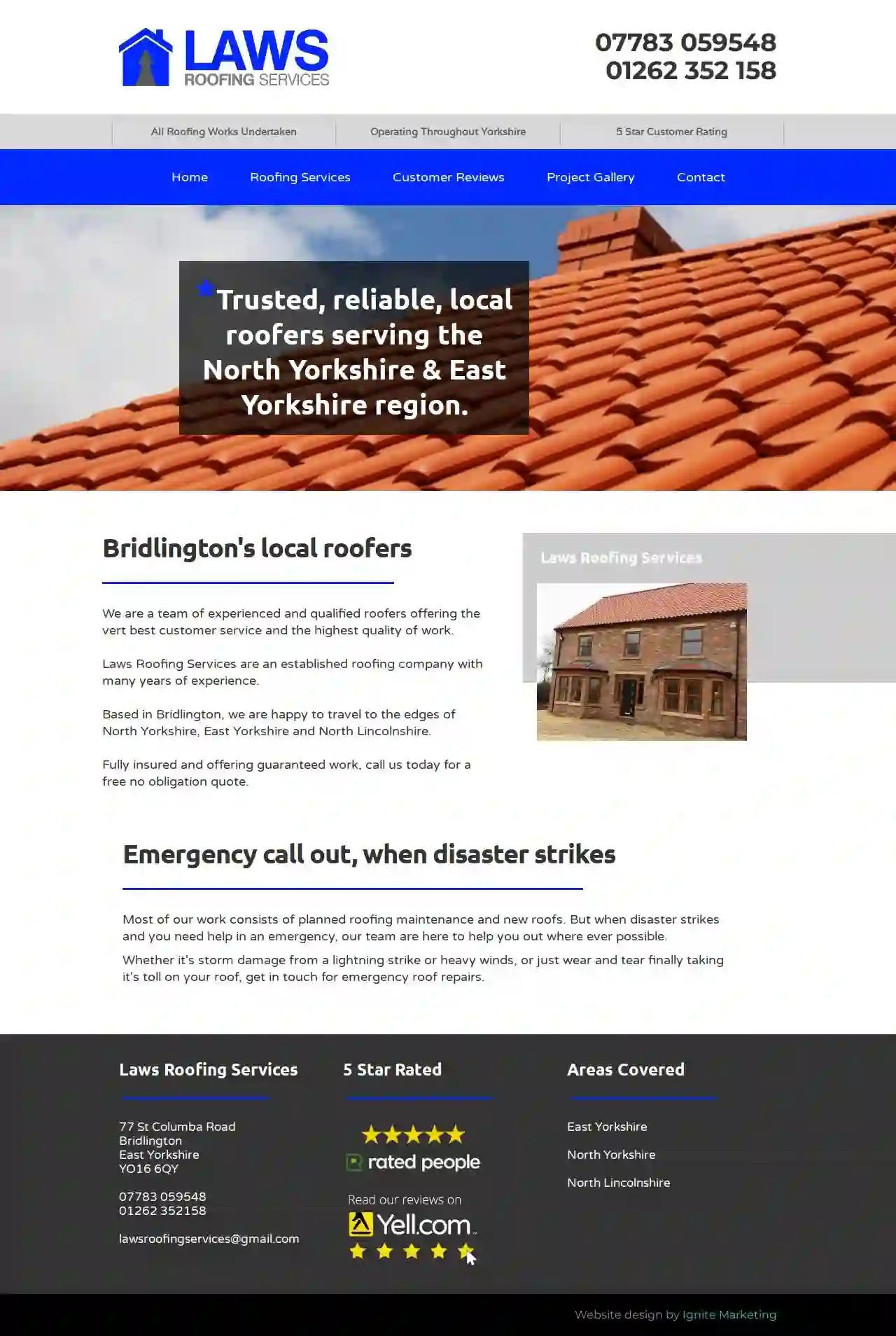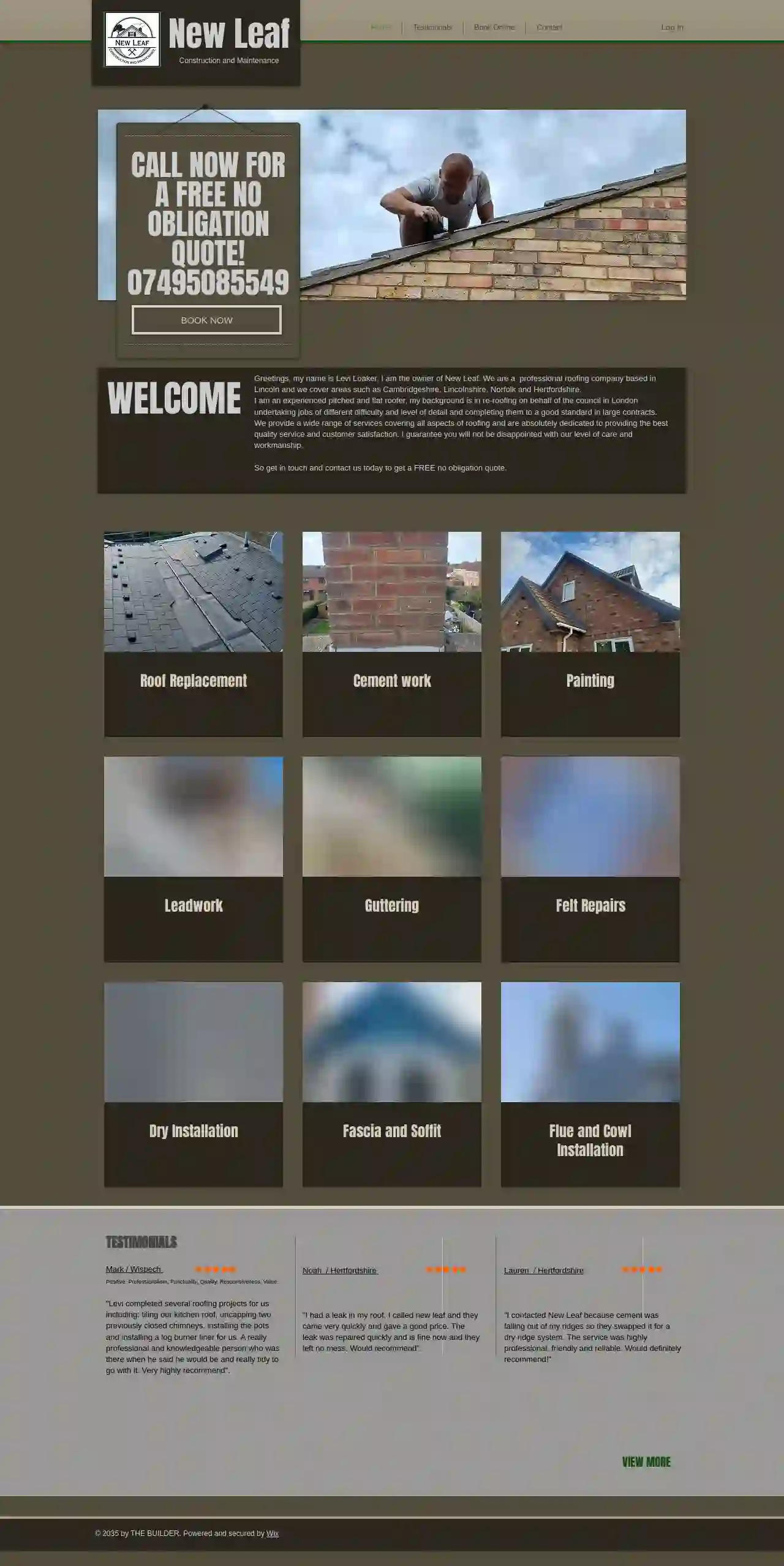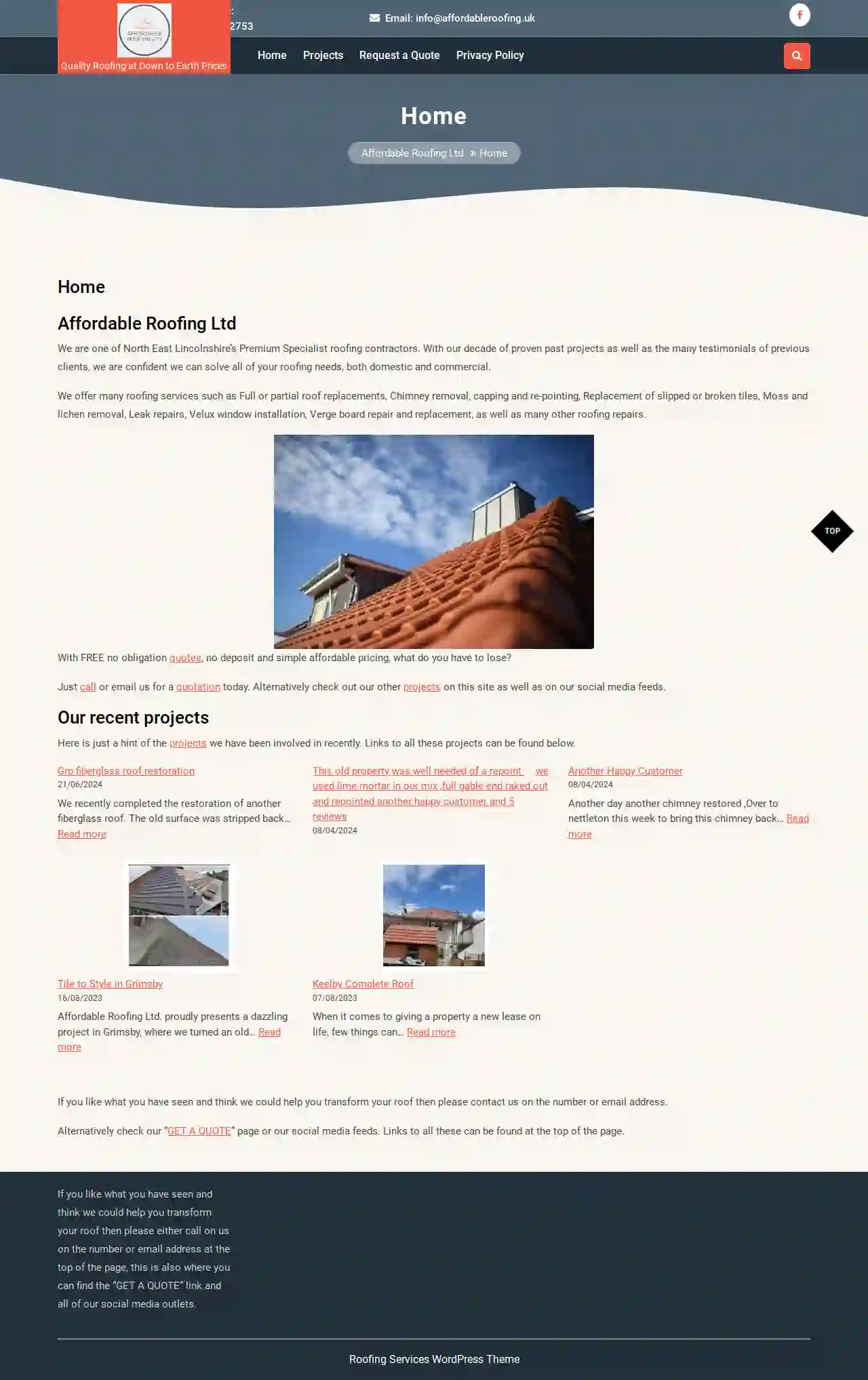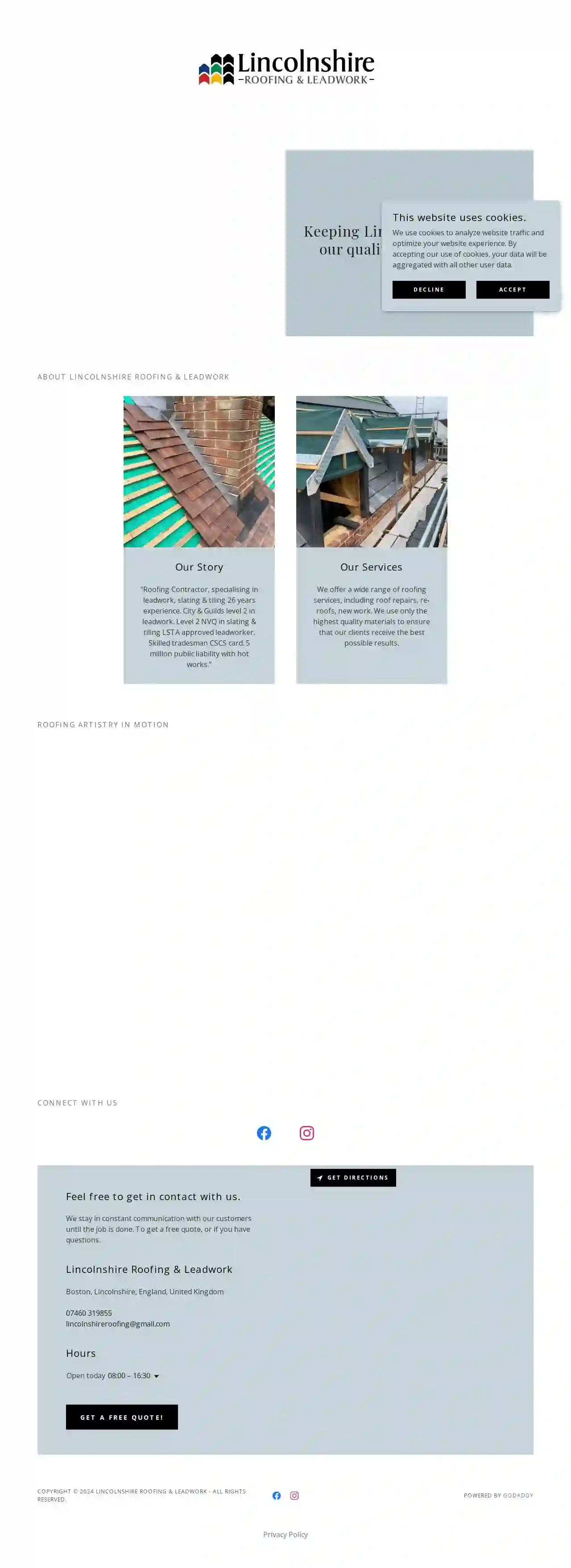Roofing Companies Brigg
Top Roofing Contractor in Brigg
Get 3 FREE Roofing Contractor quotes for your project today! Compare profiles, reviews, accreditations, portfolio, etc... and choose the best service.

Omega Property contractors ltd | Scunthorpe ,hull ,Lincoln
4.311 reviewsLincoln, GBOmega Property Contractors Ltd is a professional roofing, driveway & landscaping company with 30 years of experience providing unrivalled roofing, paving & landscaping services. We are a friendly, professional and trustworthy company with a passion for delivering high standards at affordable prices. Focusing on providing high-quality services at fair prices in and around Hull & East Riding, Lincolnshire & Surrounding Areas, Omega Property Contractors Ltd is always on hand to offer the best advice which is backed up by high-quality workmanship. We are accustomed to both residential and commercial work and are proud of being a roofing, driveway & landscaping company you can put your trust into, with excellent reviews and quality service. No matter the size of your roofing, driveway or landscaping project, we can help, from the smallest leaky roof job to the largest commercial project, we can ensure our team will provide the best possible work on every single job.
- Services
- Why Us?
- Gallery
Get Quote
Laws Roofing
32 reviews77 St Columba Road, Bridlington, YO16 6QY, GBTrusted, reliable, local roofers serving the North Yorkshire & East Yorkshire region. Bridlington's local roofers We are a team of experienced and qualified roofers offering the vert best customer service and the highest quality of work. Laws Roofing Services are an established roofing company with many years of experience. Based in Bridlington, we are happy to travel to the edges of North Yorkshire, East Yorkshire and North Lincolnshire. Fully insured and offering guaranteed work, call us today for a free no obligation quote. Laws Roofing Services Emergency call out, when disaster strikes Most of our work consists of planned roofing maintenance and new roofs. But when disaster strikes and you need help in an emergency, our team are here to help you out where ever possible. Whether it's storm damage from a lightning strike or heavy winds, or just wear and tear finally taking it's toll on your roof, get in touch for emergency roof repairs.
- Services
- Why Us?
- Gallery
Get Quote
RILEY ROOFING LTD
52 reviewsGBLincolnshire Roofing Network is a network of trusted roofing professionals serving Lincolnshire and surrounding areas. We offer a wide range of roofing services for both residential and commercial properties, including roof repairs, flat roofing, pitched roofing, fascias and soffits, and more. Our members are highly skilled and experienced, and they are committed to providing high-quality workmanship at competitive prices. We understand that your roof is a vital part of your home or business, and we are dedicated to ensuring that it is in good condition. Whether you need a small repair or a complete roof replacement, we can help. Contact us today for a free quote.
- Services
- Why Us?
- Gallery
Get Quote
New leaf construction and maintenance
4.99 reviewsLincoln, GBWelcome to New Leaf Construction and Maintenance, a professional roofing company based in Lincoln, covering areas such as Cambridgeshire, Lincolnshire, Norfolk, and Hertfordshire. As an experienced pitched and flat roofer, I, Levi Loaker, have a background in re-roofing for the council in London, undertaking jobs of different difficulty and level of detail, and completing them to a good standard in large contracts. We provide a wide range of services covering all aspects of roofing, dedicated to providing the best quality service and customer satisfaction. I guarantee you will not be disappointed with our level of care and workmanship. Get in touch and contact us today to get a FREE no obligation quote.
- Services
- Why Us?
- Our Team
- Testimonials
- Gallery
Get Quote
First Rate Flat Roofing
4.511 reviewsWyberton West Road, Boston, Eastbourne House, PE21 7LG, GBFirst Rate Flat Roofing LTD Boston are a nationwide Fibre Glass Flat Roofing Specialist. We specialise in the installation and maintenance of all types of fibre glass flat roofs locally and nationwide. We carry out residential and commercial flat roofing work. First Rate Flat Roofing LTD are insured, experts in fibre glass works and all works completed will be issued with a 25 year guarantee. Our flat roofs maintain rigidity but can flex under stress, without fracturing. Additional strengthening can easily be moulded into areas expecting high levels of stress. First Rate Flat Roofing LTD's Fibre Glass Roofing system withstands tough environmental conditions and gives better performance than many other construction materials. Fibre Glass Roof, a reinforced plastic material composed of glass fibres embedded in a resin matrix, does not corrode and therefore lasts much longer than many other comparable materials. Fibre glass has a high strength to weight ratio. We're fully insured, experienced and our system is so good we do not hesitate in offering you a free guarantee on all work for 25 years!
- Services
- Why Us?
- Our Team
- Testimonials
- Gallery
Get Quote
AFFORDABLE ROOFING LTD
513 reviewsGBAffordable Roofing Ltd is a premium specialist roofing contractor serving North East Lincolnshire. With over a decade of experience and numerous satisfied clients, we are confident in our ability to meet all your roofing needs, whether domestic or commercial. We offer a wide range of services, including full or partial roof replacements, chimney removal and re-pointing, tile replacement, moss and lichen removal, leak repairs, Velux window installation, verge board repair and replacement, and various other roofing repairs. We pride ourselves on providing FREE no-obligation quotes, no deposit requirements, and simple, affordable pricing. Contact us today for a quotation via phone or email. Explore our recent projects on this website and our social media channels for further inspiration.
- Services
- Why Us?
- Testimonials
- Gallery
Get Quote
Roof fixed roofing Ltd
51 reviewsSwinemoor Ln, Colonial House, Beverley, HU17 0LS, GBRoof Fixed Roofing Ltd is a family run roofing business working in Yorkshire, North West & North East England. We pride ourselves in offering a high quality roofing service and affordable prices with an honest approach.
- Services
- Why Us?
- Gallery
Get Quote
Lincolnshire Roofing & Leadwork
Boston, GBKeeping Lincolnshire dry, with our quality roofing service About Lincolnshire Roofing & Leadwork Our Story We are a roofing contractor, specialising in leadwork, slating & tiling with 26 years experience. We hold City & Guilds level 2 in leadwork. Level 2 NVQ in slating & tiling LSTA approved leadworker. Skilled tradesman CSCS card. 5 million public liability with hot works. Our Services We offer a wide range of roofing services, including roof repairs, re-roofs, new work. We use only the highest quality materials to ensure that our clients receive the best possible results. Roofing Artistry in Motion Connect With Us Feel free to get in contact with us. We stay in constant communication with our customers until the job is done. To get a free quote, or if you have questions. Message us on WhatsApp
- Services
- Why Us?
- Gallery
Get Quote
Roofers Lincolnshire
53 reviewsGBLincolnshire Roofing Network is a network of trusted roofing professionals serving the Lincolnshire area. We offer a wide range of roofing services for both residential and commercial properties, including roof repairs, flat roofing, pitched roofing, fascias and soffits, and more. Our members are highly skilled and experienced, and they are committed to providing high-quality workmanship at competitive prices. We understand that your roof is a vital part of your home or business, and we are dedicated to ensuring that it is properly protected. Whether you need a small repair or a complete roof replacement, Lincolnshire Roofing Network can help.
- Services
- Why Us?
- Gallery
Get Quote
Apex Roofing
51 reviewsThe Business Centre, 1000 Chester Road, Unit 10, Birmingham, B12 9AA, GBApex Roofing is a family-run business with over 25 years of experience in the roofing industry. We pride ourselves on providing high-quality workmanship and excellent customer service. Our team of skilled roofers is fully qualified and insured, and we use only the best materials to ensure a lasting roof. We offer a wide range of roofing services, including new roof installations, roof repairs, and roof maintenance. We serve both domestic and commercial clients throughout the UK. At Apex Roofing, we understand that your roof is one of the most important parts of your home or business. That's why we are committed to providing you with a roof that is both durable and aesthetically pleasing. We work closely with our clients to understand their needs and provide them with a solution that meets their budget and expectations. Contact us today for a free quote.
- Services
- Why Us?
Get Quote
Over 12,314+ Roofing Companies on our directory
Our roofing contractors operate in Brigg and beyond!
Roofyng.co.uk has curated and vetted Top Roofing Contractors in Brigg. Find the most reliable business today.
Frequently Asked Questions About Roofing Companies
- Leaks or Water Stains: Water stains on ceilings or walls, dripping water, or dampness in the attic.
- Missing, Cracked, or Curled Shingles: Inspect for damaged or missing shingles, especially after a storm.
- Damaged Flashing: Look for rust, corrosion, or gaps in flashing around chimneys, vents, or skylights.
- Sagging or Uneven Rooflines: A sagging roof could indicate structural problems.
- Granule Loss: Excessive granules in gutters suggest aging asphalt shingles.
- Moss or Algae Growth: Can trap moisture and damage roofing materials.
- Metal roofs: Reflect sunlight, reducing cooling costs.
- Tile roofs: Offer thermal mass, regulating temperature.
- Cool roofs: White or light-colored roofs with high solar reflectance.
- Green roofs: Vegetated roofs providing insulation and reducing heat absorption.
- Home Improvement Loans: Offered by banks or credit unions.
- Home Equity Loans or Lines of Credit: Use your home's equity as collateral.
- Government Programs: Check for energy efficiency rebates or grants.
- Contractor Financing: Some roofing companies offer financing plans.
What is a roof valley, and why is it important?
What are some common signs of roof damage?
What are some energy-efficient roofing options?
How can I get financing for a new roof?
What is a roof valley, and why is it important?
What are some common signs of roof damage?
- Leaks or Water Stains: Water stains on ceilings or walls, dripping water, or dampness in the attic.
- Missing, Cracked, or Curled Shingles: Inspect for damaged or missing shingles, especially after a storm.
- Damaged Flashing: Look for rust, corrosion, or gaps in flashing around chimneys, vents, or skylights.
- Sagging or Uneven Rooflines: A sagging roof could indicate structural problems.
- Granule Loss: Excessive granules in gutters suggest aging asphalt shingles.
- Moss or Algae Growth: Can trap moisture and damage roofing materials.
What are some energy-efficient roofing options?
- Metal roofs: Reflect sunlight, reducing cooling costs.
- Tile roofs: Offer thermal mass, regulating temperature.
- Cool roofs: White or light-colored roofs with high solar reflectance.
- Green roofs: Vegetated roofs providing insulation and reducing heat absorption.
How can I get financing for a new roof?
- Home Improvement Loans: Offered by banks or credit unions.
- Home Equity Loans or Lines of Credit: Use your home's equity as collateral.
- Government Programs: Check for energy efficiency rebates or grants.
- Contractor Financing: Some roofing companies offer financing plans.